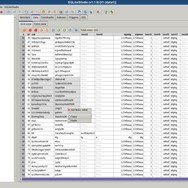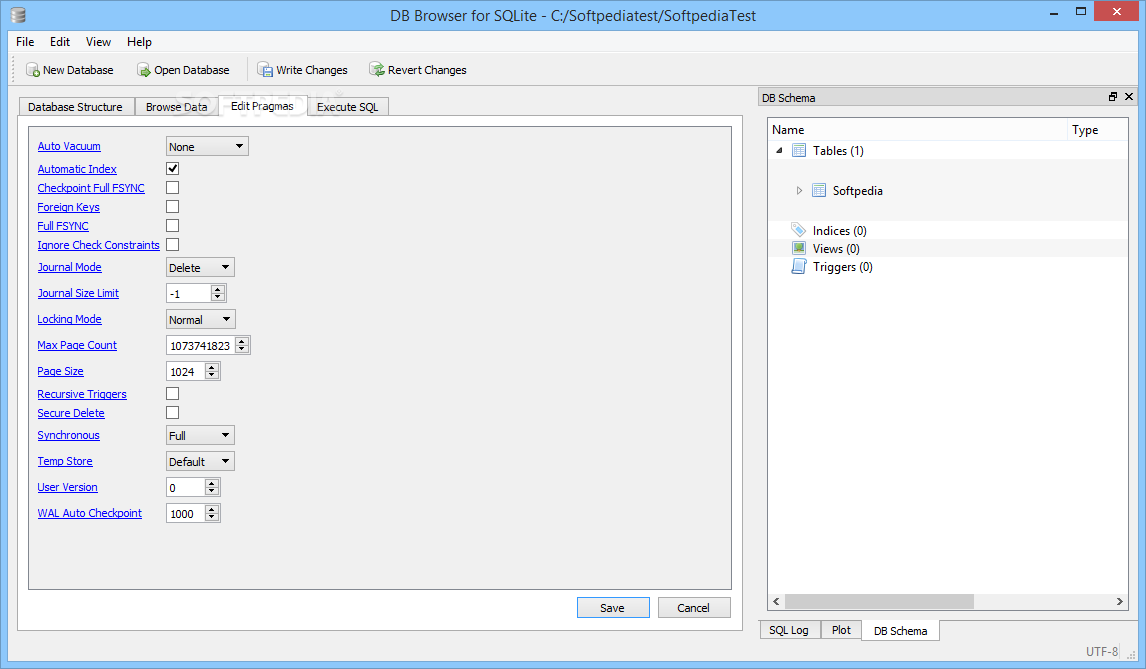
#Sqlitestudio vs db browser for sqlite update#
Second, create an AFTER UPDATE trigger to log data to the lead_logs table whenever there is an update in the email or phone column.
#Sqlitestudio vs db browser for sqlite code#
) Code language: SQL (Structured Query Language) ( sql ) To protect this valuable data, you use a trigger to log all changes which are made to the phone and email.įirst, create a new table called lead_logs to store the historical data. For example, someone accidentally updates the email or phone to the wrong ones or even delete it.

The phones and emails of the leads are so important that you can’t afford to lose this information. Leads Code language: SQL (Structured Query Language) ( sql ) 2) SQLite AFTER UPDATE trigger example VALUES ( 'John', 'Doe', '4089009334') Code language: SQL (Structured Query Language) ( sql )īecause the email is valid, the insert statement executed successfully.

INSERT INTO leads (first_name, last_name, email, phone) SQLite issued an error: “Invalid email address” and aborted the execution of the insert. VALUES( 'John', 'Doe', 'jjj', '4089009334') Code language: SQL (Structured Query Language) ( sql ) INSERT INTO leads (first_name,last_name,email,phone) Second, insert a row with an invalid email into the leads table. If the email is not valid, the RAISE function aborts the insert and issues an error message. To validate the email, we used the LIKE operator to determine whether the email is valid or not based on the email pattern. We used the NEW reference to access the email column of the row that is being inserted. In this case, you can use a BEFORE INSERT trigger.įirst, create a BEFORE INSERT trigger as follows: CREATE TRIGGER validate_email_before_insert_leadsīEGIN SELECT CASE WHEN NEW.email NOT LIKE THEN RAISE ( ABORT, 'Invalid email address') Suppose you want to validate the email address before inserting a new lead into the leads table. ) Code language: SQL (Structured Query Language) ( sql ) 1) SQLite BEFORE INSERT trigger example Let’s create a new table called leads to store all business leads of the company. The following table illustrates the rules.: Action The OLD and NEW references are available depending on the event that causes the trigger to be fired. You can access the data of the row being inserted, deleted, or updated using the OLD and NEW references in the form: OLD.column_name and NEW.column_name. However, if the trigger references other tables, the trigger is not removed or changed if other tables are removed or updated.įor example, a trigger references to a table named people, you drop the people table or rename it, you need to manually change the definition of the trigger. Notice that if you drop a table, all associated triggers are also deleted. In case you omit the WHEN clause, the trigger is executed for all rows. If you use a condition in the WHEN clause, the trigger is only invoked when the condition is true. It has not yet supported the FOR EACH STATEMENT triggers. If the trigger associated with the table is fired one time, we call this trigger a FOR EACH STATEMENT trigger.Īs of version 3.9.2, SQLite only supports FOR EACH ROW triggers. This trigger is called FOR EACH ROW trigger. Suppose you use a UPDATE statement to update 10 rows in a table, the trigger that associated with the table is fired 10 times. If you combine the time when the trigger is fired and the event that causes the trigger to be fired, you have a total of 9 possibilities: Finally, place the trigger logic in the BEGIN END block, which can be any valid SQL statements.After that, indicate the table to which the trigger belongs.Then, specify the event that causes the trigger to be invoked such as INSERT, UPDATE, or DELETE.

However, you can only create an INSTEAD OF trigger on a view. You can create BEFORE and AFTER triggers on a table. Next, determine when the trigger is fired such as BEFORE, AFTER, or INSTEAD OF.



 0 kommentar(er)
0 kommentar(er)
